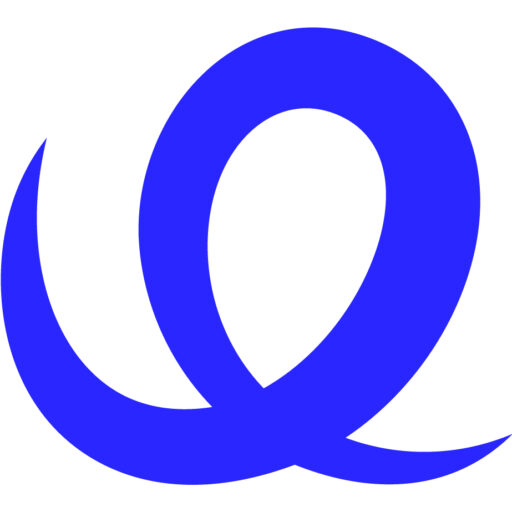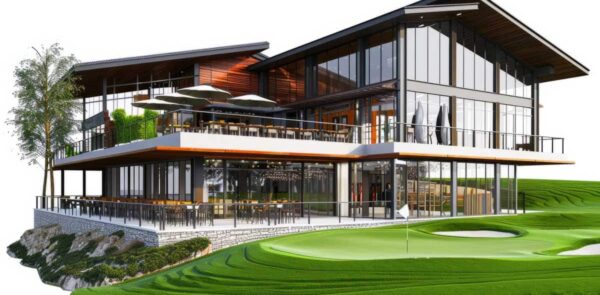
Table of Contents
Crafting a memorable presence in the wine industry, where countless labels vie for attention on shelves and online, demands a blend of creativity, authenticity, and strategic foresight. We at Linchpin have collaborated with several wineries to develop wine brand identity that cuts through the noise, emphasizing unique wine branding that highlights heritage and innovation. As we progress through 2025, with consumers seeking more personalized and sustainable options, vineyard differentiation has become paramount. This article explores comprehensive approaches to wine brand identity, providing detailed insights into unique wine branding, wine marketing uniqueness, and bottle brand building to help your label stand out and cultivate loyal followers.
Whether you’re a small vineyard or an established producer, building a strong wine brand identity can transform how connoisseurs perceive and choose your products. From terroir branding that roots your story in the soil to wine club marketing that fosters community, these elements create emotional connections. We have assisted various clients in refining their unique wine branding, leading to increased market share and enthusiast engagement. Let’s delve into the essential aspects to elevate your presence.
Defining Wine Brand Identity in a Competitive Market
Wine brand identity encompasses the visual, narrative, and experiential elements that convey your winery’s essence, setting it apart from competitors. A compelling wine brand identity starts with a deep dive into your vineyard’s history and values, translating them into cohesive visuals and messages. In an industry where 80% of purchases are influenced by label design, prioritizing wine labeling that reflects uniqueness is crucial for capturing attention at first glance.
We approach wine brand identity by conducting thorough audits of existing materials, identifying opportunities to infuse vineyard differentiation. This process in wine brand identity ensures every aspect, from logos to website copy, aligns with your core story, avoiding generic appeals that blend into the saturation.
Diving deeper into wine brand identity, consider the role of sensory details. Incorporate elements like texture in packaging or aroma descriptions that evoke the vineyard, enhancing bottle brand building beyond visuals. This multifaceted wine brand identity resonates on multiple levels, making your label memorable.
Challenges in wine brand identity include balancing tradition with modernity. Embrace unique wine branding that honors heritage while appealing to younger demographics through innovative touches.
To strengthen wine brand identity, engage sommeliers for endorsements. Their influence in wine marketing uniqueness lends credibility, amplifying your narrative.
Regularly evaluate wine brand identity through consumer feedback. Adjustments based on perceptions ensure ongoing relevance in vineyard differentiation.
Crafting Unique Wine Branding Through Storytelling
Unique wine branding thrives on narratives that transport consumers to your vineyard, sharing tales of harvests and craftsmanship. Effective unique wine branding weaves vineyard storytelling into every communication, from labels to social posts, creating an emotional bond. Research indicates stories increase recall by 22%, making vineyard storytelling a powerful tool for differentiation.
We craft unique wine branding by developing origin stories that highlight terroir branding, emphasizing soil and climate’s role in flavor. This unique wine branding approach positions your wines as products of a specific place, not commodities.
Exploring unique wine branding further, integrate multimedia. Videos of pruning or fermentation in vineyard storytelling bring processes to life, engaging senses virtually.
In unique wine branding, authenticity avoids exaggeration. Ground stories in facts to build trust, essential in wine marketing uniqueness.
To advance unique wine branding, collaborate with writers or filmmakers. Professional vineyard storytelling elevates quality, captivating audiences.
Measure unique wine branding impact with engagement metrics. Higher interactions signal resonant narratives.
Leveraging Vineyard Differentiation for Market Edge
Vineyard differentiation highlights what makes your estate unique, from varietals to practices, carving a niche in saturation. Strategic vineyard differentiation involves assessing competitors to identify gaps, like specializing in rare grapes for grape variety promotion.
We leverage vineyard differentiation by emphasizing sustainable methods, appealing to eco-conscious buyers. This vineyard differentiation not only attracts but retains through shared values.
In vineyard differentiation, location plays a key role. Promote microclimates in terroir branding to underscore flavor profiles unattainable elsewhere.
Challenges in vineyard differentiation include imitation. Protect through trademarks and consistent messaging in wine marketing uniqueness.
To enhance vineyard differentiation, conduct tastings focused on comparisons. Highlight distinctions to educate and convert attendees.
Assess vineyard differentiation with market surveys. Recognition of uniques validates efforts.
Enhancing Wine Marketing Uniqueness with Events
Wine marketing uniqueness stands out through experiential offerings that go beyond the bottle, creating lasting impressions. Innovative wine marketing uniqueness includes wine tasting events that pair vintages with local cuisine, showcasing versatility.
We enhance wine marketing uniqueness by organizing exclusive vineyard tours, immersing guests in the production story. These wine tasting events foster advocacy, as participants share experiences.
For wine marketing uniqueness, virtual events expand reach. Live streams of harvests in vineyard storytelling connect global audiences.
In wine marketing uniqueness, customization adds appeal. Offer personalized blends at events for memorable takeaways.
To optimize wine marketing uniqueness, promote via targeted ads. Reach enthusiasts for higher attendance.
Track wine marketing uniqueness with post-event sales. Spikes indicate effective engagement.
Innovating Bottle Brand Building for Shelf Appeal
Bottle brand building focuses on packaging that captivates at point-of-sale, combining aesthetics with functionality. Creative bottle brand building employs wine packaging design that reflects the wine’s character, like elegant shapes for premiums.
We innovate bottle brand building with eco-friendly materials, aligning with sustainability trends in wine packaging design. This bottle brand building appeals to conscious consumers.
In bottle brand building, labels tell mini-stories. Include QR codes linking to videos for interactive elements.
Challenges in bottle brand building include cost. Balance innovation with budget through phased rollouts.
To advance bottle brand building, test designs with focus groups. Feedback refines appeal.
Evaluate bottle brand building with shelf performance. Higher pickups signal success.
Utilizing Terroir Branding for Authentic Connection
Terroir branding emphasizes the land’s influence on wine, creating a sense of place that differentiates. Authentic terroir branding shares soil and climate details, educating on flavor origins.
We utilize terroir branding in labels and sites, mapping vineyards for visual storytelling.
In terroir branding, events like soil tastings uniquely demonstrate impact.
Terroir branding challenges include complexity. Simplify explanations for accessibility.
To strengthen terroir branding, partner with experts. Geologists add depth to narratives.
Measure terroir branding with brand association surveys. Strong links indicate resonance.
Developing Wine Club Marketing for Loyalty
Wine club marketing builds recurring revenue through subscriptions offering exclusives and perks. Effective wine club marketing personalizes shipments based on preferences, enhancing satisfaction.
We develop wine club marketing with referral incentives, expanding membership organically.
In wine club marketing, virtual tastings keep members engaged remotely.
Retention in wine club marketing requires value. Include educational content with deliveries.
To optimize wine club marketing, segment members for targeted communications.
Track wine club marketing with churn rates. Low figures show loyalty.
Highlighting Vintage Differentiation for Premium Positioning
Vintage differentiation showcases year-specific qualities, positioning wines as collectibles. Strategic vintage differentiation involves limited releases, creating scarcity.
We highlight vintage differentiation with detailed notes on weather impacts, educating buyers.
In vintage differentiation, auctions elevate prestige for rare years.
Consistency across vintages in vintage differentiation maintains quality perception.
To advance vintage differentiation, use aging charts. Guide consumers on peak enjoyment.
Assess vintage differentiation with premium pricing uptake. Acceptance validates positioning.
Optimizing Winery SEO for Digital Discoverability
Winery seo targets searches like “best cabernet,” driving traffic to your site. Comprehensive winery seo includes keyword-rich descriptions of varietals.
We optimize winery seo with local focus, highlighting events for nearby searchers.
In winery seo, blog on pairings boosts content relevance.
Technical issues in winery seo, like slow sites, hinder rankings. Prioritize speed.
To enhance winery seo, build backlinks from food blogs. Increase authority.
Track winery seo with organic visits. Growth indicates visibility.
Promoting Grape Variety Promotion for Niche Appeal
Grape variety promotion focuses on lesser-known types, attracting adventurers. Effective grape variety promotion educates on profiles and pairings.
We promote grape variety promotion with dedicated tastings, spotlighting uniques.
In grape variety promotion, collaborations with chefs create themed menus.
Diversification in grape variety promotion reduces risk from trends.
To innovate grape variety promotion, develop apps for virtual explorations.
Measure grape variety promotion with sales of featured wines. Increases show interest.
Real-World Stats: Wine Branding Data
In 2025, the global wine market reaches $450 billion, growing 4% annually. Label design influences 80% of purchases.
Sustainable practices attract 70% of millennials. Storytelling boosts recall 22%.
Wine clubs retain 60% members with personalization. SEO drives 50% winery traffic.
Wine Branding Key Metrics:
- Market size: $450B.
- Label influence: 80%.
- Millennial sustainability: 70%.
- Storytelling recall: 22%.
- Club retention: 60%.
Here’s a table summarizing wine branding statistics for 2025:
| Metric | Value | Insight |
|---|---|---|
| Global Market | $450B | 4% growth |
| Label Purchases | 80% | Influence |
| Sustainability Appeal | 70% | Millennials |
| Storytelling Boost | 22% | Recall |
| Club Personalization | 60% | Retention |
| SEO Traffic | 50% | Winery sites |
| Event Engagement | 35% | Conversion lift |
| Vintage Premium | 25% | Pricing uplift |
| Digital Sales | 40% | Growth |
| Influencer ROI | 3x | Average |
These figures highlight wine brand identity’s importance. For example, 70% prefer sustainable brands, driving unique wine branding success.
Conclusion
In conclusion, wine brand identity, unique wine branding, vineyard differentiation, wine marketing uniqueness, and bottle brand building are essential for standing out. By incorporating wine labeling, vineyard storytelling, wine tasting events, sommelier influence, wine packaging design, terroir branding, wine club marketing, vintage differentiation, winery seo, and grape variety promotion, wineries can forge deep connections and drive growth.
We at Linchpin provide expert guidance in wine brand identity development, from unique wine branding concepts to vineyard differentiation strategies. Our team can assist with wine marketing uniqueness campaigns, bottle brand building, and optimizing winery seo for enhanced visibility.
If you need help with wine brand marketing, contact the Linchpin team today. We’re ready to partner with you for optimal results.



